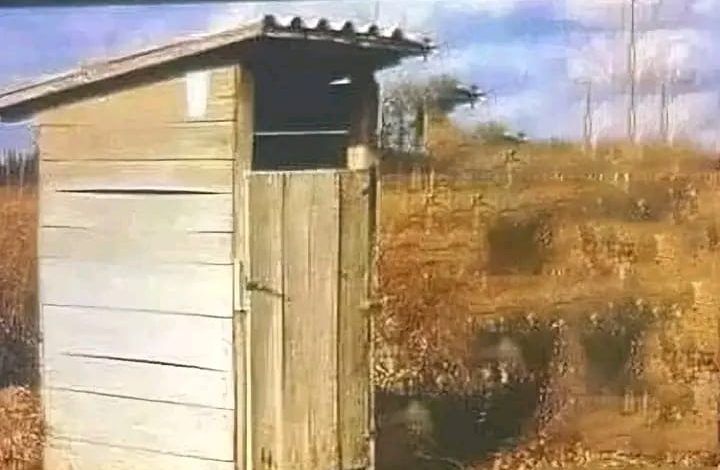The Enduring Legacy of the Outhouse: A Nostalgic Look at Rural Sanitation

ADVERTISEMENT
The Enduring Legacy of the Outhouse: A Nostalgic Look at Rural Sanitation
Introduction:
The outhouse, often seen as a relic of the past, stands as a testament to rural living and the simplicity of old-fashioned sanitation methods. This seemingly humble structure played a pivotal role in the daily lives of many before the widespread adoption of indoor plumbing. Today, the image of an outhouse evokes a sense of nostalgia and offers a window into a way of life that many modern individuals may find hard to imagine.
Presentation:
The photograph showcases a typical outhouse, solitary and unassuming, set against a backdrop of a sparse, rural landscape. The weathered wood and the slightly ajar door hint at its age and years of use. The outhouse is positioned in a field, surrounded by dry grass, under a vast, clear sky, emphasizing its isolation and the self-sufficiency of those who relied on such facilities. This image not only captures the physical appearance of the outhouse but also symbolizes the rugged independence of earlier rural life.
Exposition:
ADVERTISEMENT
Outhouses were once a common feature in rural North America, serving as the primary means of sanitation until the mid-20th century. Constructed away from the main living area, these small structures offered privacy and modesty while fulfilling a basic human need. The design was typically simple: a small wooden shack with a bench inside, featuring one or two holes. The absence of plumbing required the outhouse to be moved or the pit to be covered and a new one dug when it became full. Despite their rustic nature, outhouses were often decorated with personal touches, reflecting the character of their users.
Cultural Significance:
The outhouse also holds a place in cultural lore, often depicted in stories and jokes that underscore both its practicality and the discomfort that could come with its use, especially in harsh weather conditions. Beyond humor, the outhouse is emblematic of a time when self-reliance was not just a virtue but a necessity. It reminds us of the strides made in sanitation and public health, and how these advancements have changed our connection to the environment and each other.
Conclusion:
The outhouse may now be a symbol of a bygone era, yet it remains a powerful image of resilience and simplicity. For those who remember them, outhouses are a reminder of youthful days and simpler times. For others, they are an artifact of curiosity, an emblem of how far technology and comfort have advanced. As we continue to evolve and modernize, the outhouse stands as a humble monument to our ongoing journey from the rudimentary to the sophisticated in every aspect of human life.
ADVERTISEMENT




